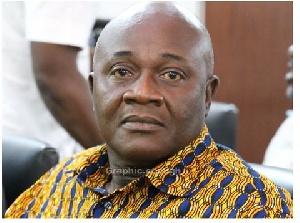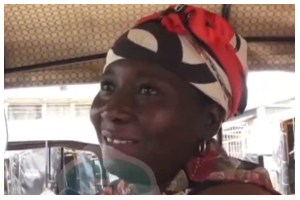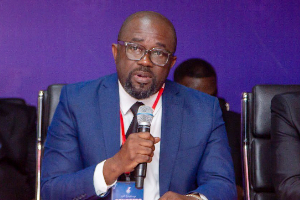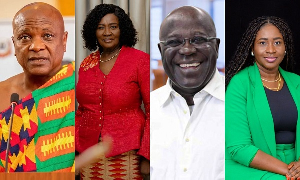In a bit deepen decentralization, devolution of power and bring governance to the doorsteps of the people, the NDC party on page 72-73 of their 2016 manifesto intended to create five (5) additional regions to bring the number of regions to fifteen (15).
It is unclear which regions these additional five regions were to be created. Following consistent demands for the Oti Region in Volta Region, Bono-East Region in the Brong-Ahafo Region, Western North Region in the Western Region; and the Eastern Corridor and Guan Region by Dagombas, Konkombas, Nanumbas, Basares, Nawuris, and Chekosis on one hand and the Gonjas on the other hand in the Northern Region suggest that the NDC might have contemplated giving the Northern Region two (2) additional regions – the Eastern Corridor Region and the Guan Region in addition to the three proposed – Oti, Bono-East and Western North Regions.
On page 67 of the NPP’s 2016 manifesto, the party committed itself to creating Western North region out of the current Western Region. However, when H. E. Nana Addo created the Ministry of Regional Reorganisation and Development, he indicated during his ‘thank you’ tour that a number of demands are being made for creation of additional regions.
Northern Region, Volta and Brong-Ahafo regions were also mentioned and the president is speculated to have had a seemingly similar vision of the NDC to create four or five additional regions.
Article 5 of the Constitution provides two criteria to trigger the creation, merger or alteration of additional regions. Upon receipt of petition as in Article 5(2) or by his own volition as in Article 5(3).
It must be noted that the president could have gone ahead to get the Council of State to advised him so he will set up Commission of Inquiry to recommend the creation and referendum under Article 5(4) without recourse to any petition from person or group of persons.
Out of courtesy and in recognition of the vital role of chiefs in the ownership of lands and their key stakeholdership in important exercise of this nature, the President, through the sector Minister began by engaging various Regional Houses of Chiefs even though the Constitution does not specify the qualification of persons or group of persons qualified to petition the President for the creation of regions.
Volta, Bono-East and Western North Chiefs and people have ceremonially petitioned the president and met the Justice Brobbey’s Commission of Inquiry for the creation of Oti, Bono-East and Western-North Regions respectively.
The Chiefs of Mamprugu and Gonjaland in the Northern Region have equally petitioned the president and appeared before the Commission of Inquiry to pursue their demand for the creation of North-Eastern and Guan regions respectively.
The Chiefs and Opinion leaders of the Eastern Corridor have equally petitioned for the creation of North-Eastern Region indicating the Eastern Corridor Region to include 11 district (Kpandai, Nanumba North, Nanumba South, Yendi, Mion, Gusheigu, Karaga, Chereponi, Saboba, Tatale/Sanguli, and Zabzugu) as the ideal scenario they wish for.
The Coalition of Eastern Corridor Youth (COECY) have held durbar, press conference and demonstration to clamour their demand for the creation of the proposed Eastern Corridor Region. They have also petitioned for the creation of the proposed Eastern Corridor Region.
The Dagbong Traditional Council has, however, vowed not to cede any of Dagbong lands for the convenience of regional creation. But does regional creation which is purely for administrative expediency and bringing governance to the doorsteps of the people have any adverse effects on traditional territories and land ownership? Many development experts have called for proper orientation of chiefs arguing strongly that regional creation is for administrative purposes and it does not have effects on traditional authorities and territories.
It must be noted that traditional boundaries are more entrenched and seem unalterable. There is no law showing how traditional boundaries can be created, altered or merged as is the case of political administrative boundaries made up of regions that can be altered by Chapter Two, Article 5, Clauses 1 to 8 of the 1992 Constitution and Metropolitan/Municipal and District Assemblies which are created and altered in accordance with Section 1(4) of the Local Government Act, 2016 (Act 936).
Hence, Dagbong chiefs need not have any fear over lost of land. If at all the welfare of the people over whom they rule should be paramount, not just lands which are free gifts of God to mankind.
Of concern in this episode is the arguments of anti-Eastern Corridor Region that the NPP government and Nana Addo is seeking to divide and weaken Dagbong as they have left out highly populated areas as Ashanti and Greater Accra Region untouched and come to divide Northern Region.
Question: Is the government acting suo moto under Article 5(3) to create additional regions in the Northern Region or he has been petitioned under Article 5(2)? Simply, he has been petitioned by chiefs and people of the Eastern Corridor as such, the process of demarcation of the Northern Region has been triggered by the people not the president.
Whatever the process will be, it would most likely end up with referendum in which at least 50 percent of eligible voters are to turnout and give at least 80 percent “Yes Vote” for the proposed Eastern Corridor Region.
This further strengthens my argument that Nana Addo and his NPP government will not create the proposed Eastern Corridor Region, rather, IT WILL BE DONE BY THE PEOPLE SINCE YOU AND I SHALL VOTE IN FAVOUR OR AGAINST ITS CREATION when the referendum opens (Article 5 Clause 6).
For those who compare the proposed Eastern Corridor Region and Northern Region to Ashanti Region and Greater Accra Region are at best “comparing apples with oranges.” Though these two regions have had the substantial population, the land size, level of development and constitutional processes differ substantially. First, the people of Greater Accra and Ashanti region have not petitioned the president to create a region, but that of Northerners have.
So it is NOT as if the President have left these places and come to demarcate the Northern Region. We the chiefs and people of Northern Region have called on the president to do so for us.
Second, the Northern Region is too large to be governed by one regional minister. It has a land area of 70,384km2 representing almost one-third of the entire land area of Ghana.
Half of the Northern Region’s landmass is more than the combined land area of Greater Accra and Ashanti Region which both sum up to 27,634km2 (3,245+24,384)km2. The Northern Region is almost three times the landmass of Ashanti Region and more than twenty-one times the land area of Greater Accra Region. The Northern Region is the only region whose vastness stretches from one boundary of Ghana to another directly opposite boundary.
That is, it stretches from Ghana-Ivory Coast border from the west to the Ghana-Togo border to the east. So can we compare the Northern Region to the Greater Accra and Ashanti Region?
I think it would be better to respect the legitimate demand of those clamouring for the Eastern Corridor Region, just as the Dagbong Traditional Council have equally resolved to respect the legitimate demand of those seeking to have new regions created out of the Northern Region.
Despite the vastness of the Northern Region, it is ranked along with Upper East, West and Central as the top four poorest regions in the country (GSS, 2012). On education, only 37.5 percent of persons aged 11 years and above in the Northern Region are literate below the national average of 74.1 percent.
Greater Accra and Ashanti have literacy rate of 89.3 percent and 82.6 percent respectively. This is far above the national average and each is twice better than that of Northern Region.
Greater Accra and Ashanti both have over 40 tertiary institutions each compared to the Northern Region with around 20 tertiary institutions. The worst of this can be found in the North-East and South of the Northern Region.
Out of the current population of 1.2 million from all the 11 districts of total land area of 19,320.3km2 and population density of 50 persons per kilometre square compared with the Northern Region’s population density of 34 persons per kilometre square, the proposed Eastern Corridor Region does not have a single University; not even a polytechnic.
Upon all these, it can boast of only two colleges of education and two health training institutions without a modern hospital that can take care of serious health cases.
Hhmm, The Ashanti Region has 63 Courts comprising 1 Appeal Court, 16 High Courts, 14 Circuit Court and 32 District Courts, whiles the Greater Accra has a total of 103 Courts comprising 1 Supreme Court, 2 Appeal Courts, 48 High Courts, 15 Circuits and 37 District Courts.
The Northern Region…hhmm has only 15 Courts made up of 1 Appeal Court, 3 High Courts, 2 Circuit Courts and 9 District Courts.
Just imagine! Yet, we keep comparing Northern Region to those regions claiming that they want to divide us. They want to develop us, not divide us. Did the creation of Mion district out of the Yendi Municipality divide us?
Wouldn’t those comparing the Northern Region to Greater Accra and Ashanti Region have mercy on the 40 percent of Northern Region’s population who live in the Eastern Corridor with abject poverty, poor education, poor health, and poor road infrastructure?
Don’t you realise the worst and mess that the people of Kpandai, Wulensi, Bimbilla, Tatale/Sanguli, Zabzugu, and Saboba go through to access health service at the Regional Hospital in Tamale? The mess they go through to access regional offices such as GSS, GIS, GES, GHS, DVLA, GSS, etc. all concentrated in Tamale? Wouldn’t you be happy to have those offices, facilities, health and educational institutions replicated in Yendi? The home of the Overlord of Dagbong, Yaa-Naa?
Let’s think deeply, reflect soberly, sympathise and empathise with our brethren in the Eastern Corridor Region. ‘Life without sober reflection is a replica of death’, they say. Show mercy and love for the 1.2 million living in the Eastern Corridor and support the proposed Eastern Corridor Region whose motive is only for accelerated development of all.
After all, regional boundaries do not have any adverse effects on traditional territories and jurisdiction, and in the end the Overlord of Dagbong would have the privilege of being the only king in Ghana to govern two regional capitals. The Dagbong Traditional Council should think about this natural blessing they are denying themselves and the kingdom of Dagbong.
Let me repeat again that the President and the government has not left out Greater Accra and Ashanti Regions and have come to divide Dagbong. The two regions, by their land size and level of development do not merit creation of additional region and they have accordingly not petitioned the president for creation of additional regions.
In a democratic society like Ghana, we all say government of the people, by the people and for people. As such, the Northern Region, per its size and level of development need to catch up at a faster pace of development than it is now.
The Coalition of Eastern Corridor Youth – COECY, chiefs and opinion leaders of the most viable area of the region have petitioned and will continue to push for the creation of the proposed Eastern Corridor Region with Yendi as its capital.
You may contact us via the media below to convince us to back out our demand for the region if you have a genuine reason why the Eastern Corridor Region should not be created.
Opinions of Tuesday, 9 January 2018
Columnist: Abdulai yakubu















